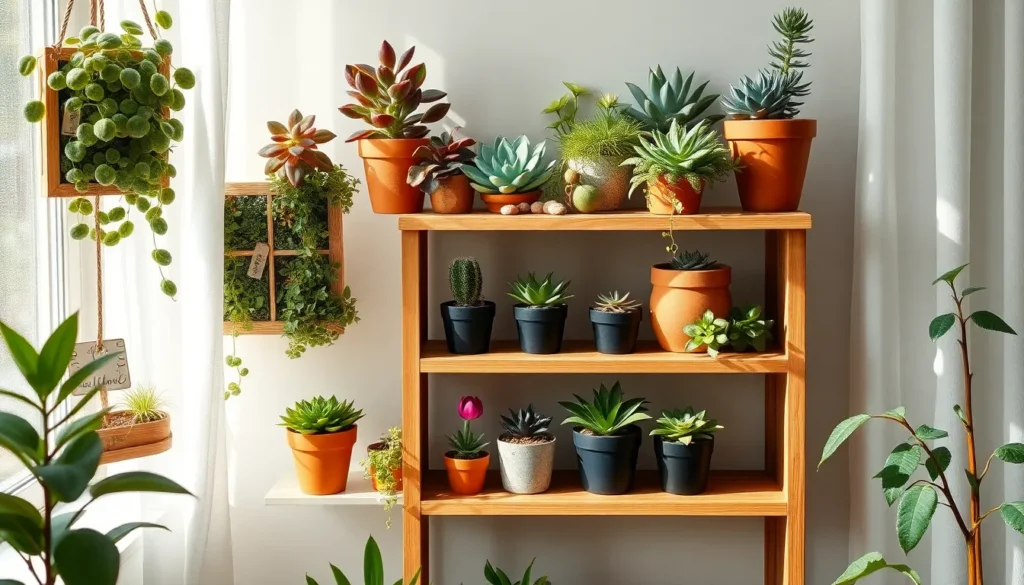Imagine transforming even the tiniest nook in your home into a lush, green oasis that breathes life into your living space. Indoor gardening isn’t just for those with sprawling estates; it’s an art form that can thrive in the smallest of spaces, bringing joy and a sense of accomplishment to both novice and seasoned gardeners alike. This article will open the door to a variety of DIY indoor gardening projects tailored specifically for compact environments, proving that a lack of space is no barrier to cultivating your own sanctuary.
For beginners, these projects offer a gentle introduction to the world of gardening, with clear, easy-to-follow steps that ensure success without the overwhelm. Experienced gardeners, on the other hand, will find creative challenges that push the boundaries of traditional gardening, inspiring them to explore new techniques and plant varieties. Whether you’re looking to add a dash of greenery to your studio apartment or you’re eager to experiment with vertical gardens, this guide has something for everyone.
You’ll learn how to maximize every inch of your available space by selecting the right plants and containers that suit your environment perfectly. We’ll delve into innovative solutions such as hanging gardens, hydroponics, and window sill herb collections, each designed to thrive indoors. As you embark on this journey, you’ll not only enhance your home’s aesthetic but also improve your air quality and boost your mood, all while nurturing your inner gardener.
Choosing Compact Plant Varieties
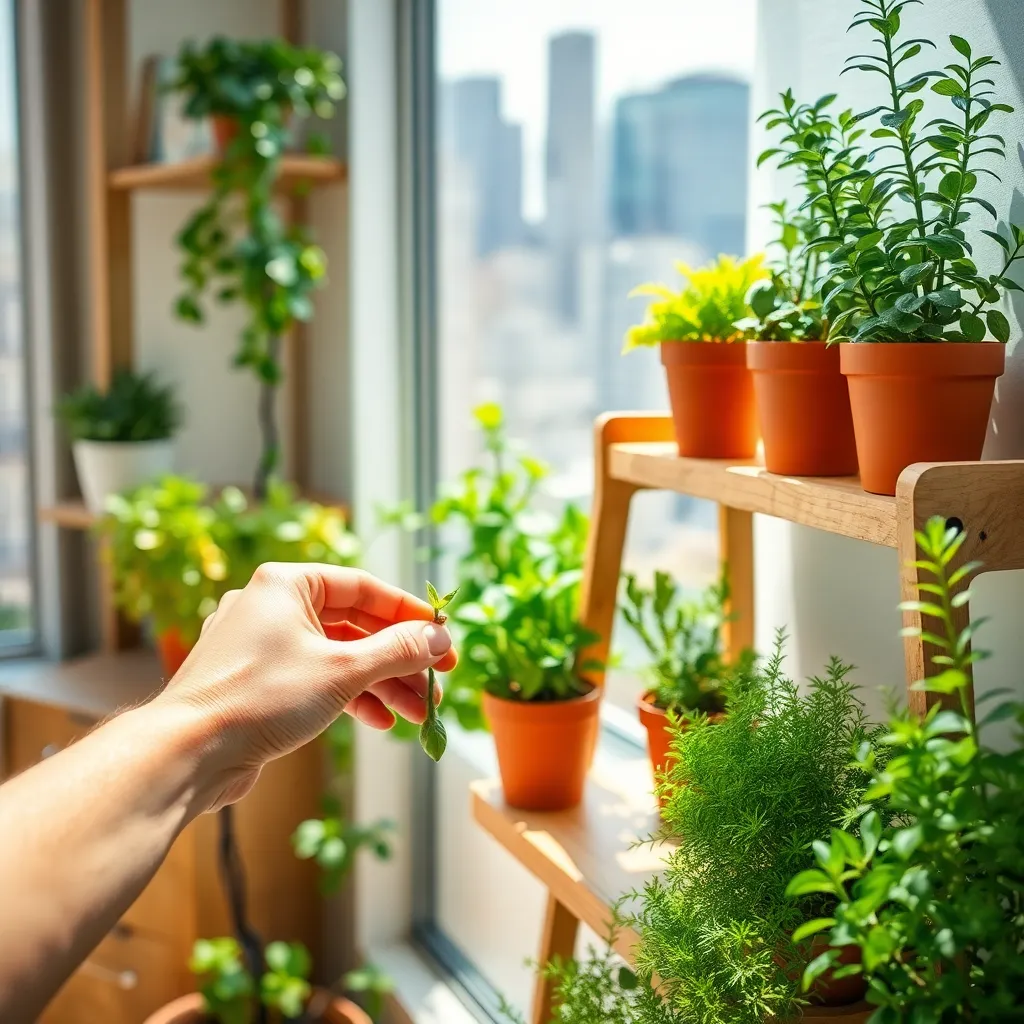
Maximizing your indoor gardening space starts with choosing compact plant varieties. These plants are specifically bred to thrive in small areas, making them perfect for windowsills, shelves, or even small tables.
Consider varieties like dwarf tomatoes or bush beans, which are both productive and space-efficient. These plants require only a small pot, ideally around 6 inches deep, and thrive with plenty of sunlight—at least 6 hours a day.
Herbs such as basil, thyme, and parsley are excellent choices for small spaces and can thrive in shallow containers. Use a well-draining potting mix and ensure they receive moderate watering; overwatering can lead to root rot.
For beginners, succulents are a low-maintenance option that adds greenery with minimal care. They need bright, indirect light and only require watering once every two weeks, making them ideal for busy lifestyles.
- Use a potting mix designed for succulents and cacti to ensure proper drainage.
- Rotate your plants occasionally to promote even growth.
- Consider self-watering pots to simplify the watering routine.
Creative Container Gardening Ideas

Creative container gardening is an excellent solution for those looking to maximize small indoor spaces. Start by selecting containers that fit your aesthetic and functional needs, such as hanging baskets or window boxes.
Consider using repurposed items like old teapots, wooden crates, or tin cans to add a unique touch to your indoor garden. Ensure these containers have adequate drainage holes to prevent water from collecting at the bottom, which can cause root rot.
For a successful container garden, select a high-quality potting mix that provides good aeration and retains moisture. Mix in some perlite or vermiculite to improve drainage, especially for plants that prefer drier conditions.
Watering is crucial, so be mindful of the needs of each plant. Generally, most indoor plants thrive on a schedule that allows the top inch of soil to dry out between waterings, but always check individual plant requirements as some may need more or less frequent watering.
Experiment with plant combinations to create a visually appealing display. Combine plants with similar light and water needs to ensure they thrive together, such as pairing succulents with cacti or grouping herbs like basil and thyme.
Advanced gardeners might try their hand at vertical gardening within containers, using trellises or wall-mounted pots. This not only saves space but also creates a lush, green focal point in your indoor area, adding both beauty and freshness to your living space.
Vertical Gardens: Maximizing Wall Space
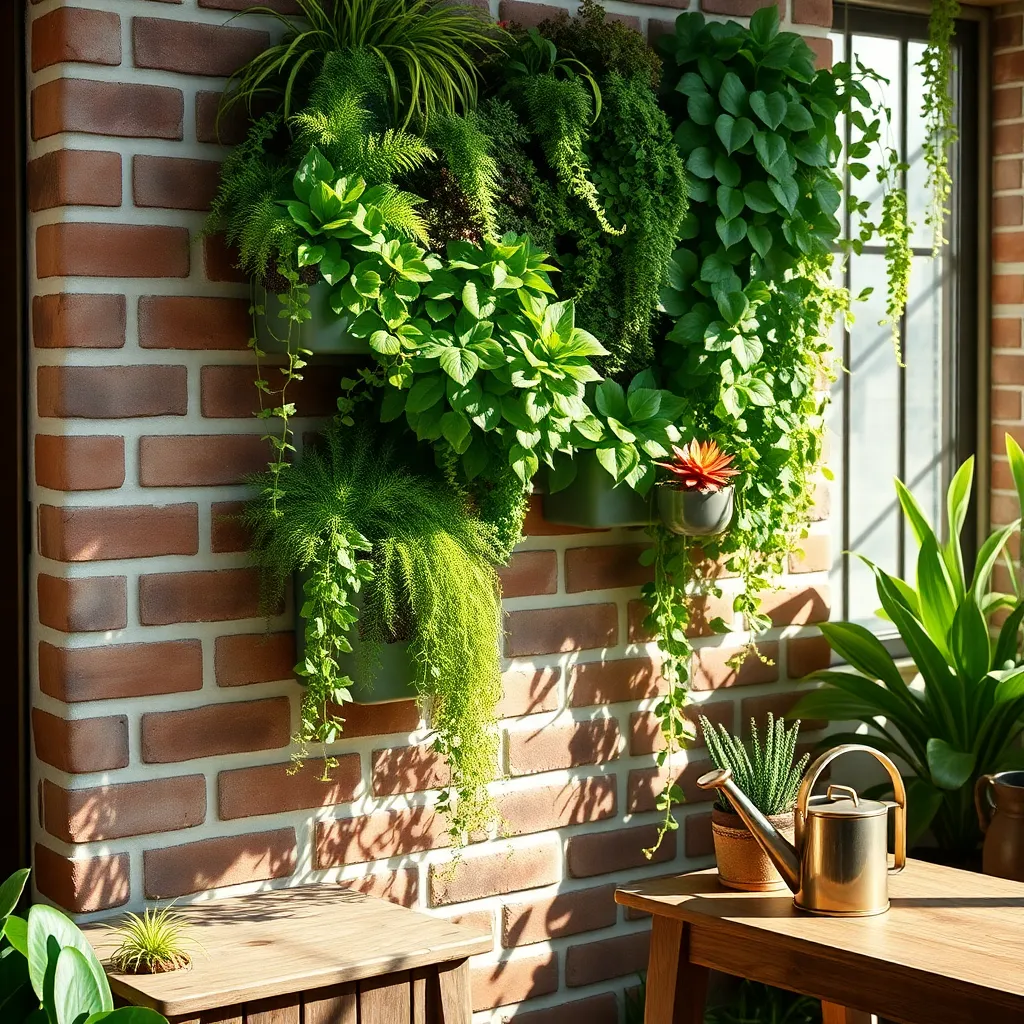
Vertical gardens are a fantastic way to make the most of limited indoor space by utilizing your walls. To start, you’ll need a sturdy structure like a trellis or a modular system, which can be purchased or made from recycled materials.
Choosing the right plants is crucial for a thriving vertical garden. Opt for plants that naturally climb, like pothos or philodendron, as well as compact herbs such as basil and mint for a diverse display.
It’s important to consider the light requirements of your chosen plants. Position your vertical garden near a window with plenty of indirect sunlight, or use grow lights to ensure they get adequate exposure.
Watering can be a bit tricky with vertical gardens, as gravity can cause water to drain quickly. Consider using a drip irrigation system or self-watering planters to maintain consistent moisture levels, reducing the risk of overwatering or underwatering.
For advanced gardeners looking to enhance their vertical gardens, experiment with hydroponic systems. This soilless method can maximize growth by delivering nutrients directly to the roots, but requires careful monitoring of nutrient solutions and pH levels.
DIY Miniature Herb Gardens
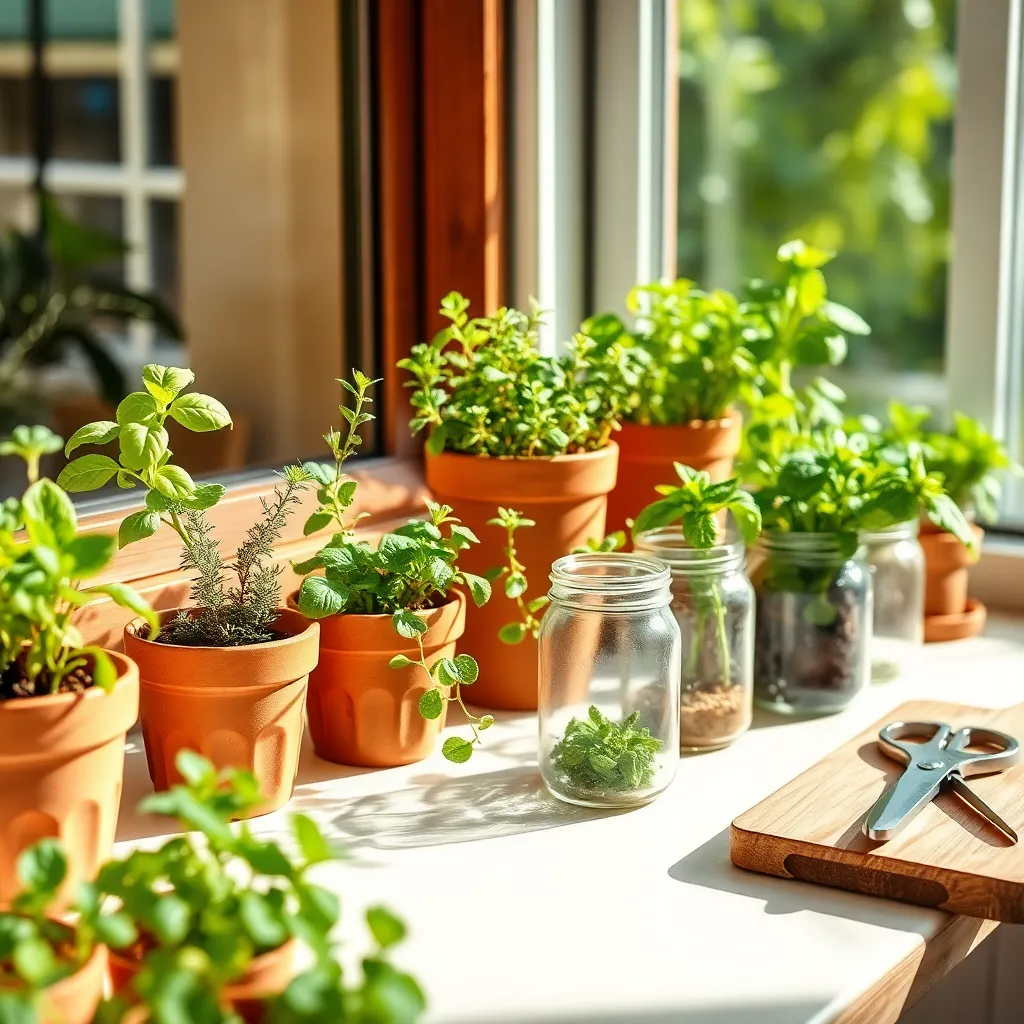
Creating a DIY miniature herb garden is a perfect project for small spaces and offers fresh herbs at your fingertips. You can start by selecting a few small pots or recycled containers like tin cans or glass jars, ensuring they have drainage holes.
Choose herbs that thrive indoors, such as basil, mint, or thyme, which are excellent for beginners. Fill your containers with a well-draining potting mix, ideally one formulated for herbs or indoor plants, to support healthy root growth.
Position your miniature herb garden in a spot that receives plenty of natural light, such as a windowsill with south or east exposure. If natural light is limited, consider using a small grow light to supplement and keep your herbs thriving.
Water your herbs when the top inch of soil feels dry, avoiding overwatering which can lead to root rot. Regularly trim your herbs to encourage bushy growth and prevent them from becoming leggy, which also keeps a steady supply of fresh leaves for your kitchen.
For those looking to expand their herb gardening skills, consider adding a small hydroponic system to your setup. This can be especially useful for cilantro and parsley, as they thrive in a consistently moist environment without the need for soil.
Lighting Solutions for Indoor Plants
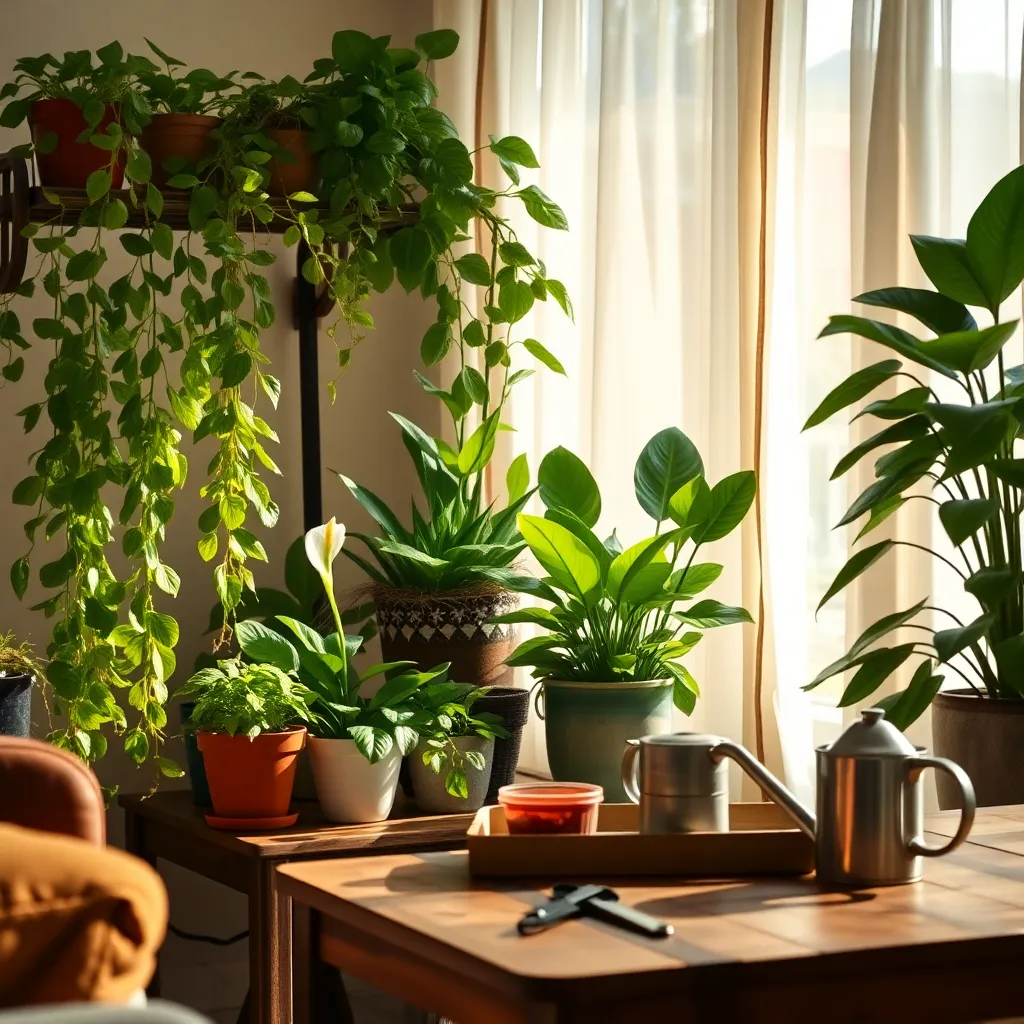
When it comes to indoor gardening, adequate lighting is essential for plant health and growth. Many indoor spaces lack sufficient natural sunlight, so selecting the right lighting solutions can make a significant difference.
For beginners, starting with LED grow lights is both economical and effective. These lights are energy-efficient, provide a full spectrum of light, and generate very little heat, making them ideal for small spaces.
Position your grow lights about 12 to 18 inches above your plants to mimic natural sunlight. Adjust the height as your plants grow to ensure they receive consistent light exposure without burning the leaves.
Experienced gardeners might experiment with adjustable light spectrums to optimize growth phases. Adjusting the light spectrum can encourage different stages of plant development, such as using more blue light for vegetative growth and red light for flowering.
Consider setting a timer to automate your lighting schedule, ensuring plants receive 12 to 16 hours of light daily. This helps mimic the natural day-night cycle and can lead to healthier, more robust plants.
Finally, remember to regularly clean your light fixtures to maintain their efficiency. Dust and grime can reduce light output, so a simple wipe with a damp cloth every few weeks will keep your lighting system in top shape.
Conclusion: Growing Success with These Plants
In the journey of nurturing relationships, the art of DIY indoor gardening in small spaces offers profound insights. First, it teaches patience, reminding us that growth, whether in plants or relationships, requires time and care. Second, it emphasizes adaptability, as small spaces challenge us to creatively nurture life, much like we adapt to changing dynamics in relationships. Third, collaboration becomes vital; just as plants thrive with the right balance of elements, relationships flourish when partners work together. Fourth, communication is mirrored in how we tune into the needs of our plants, much like understanding and responding to a partner’s needs. Finally, the joy of shared achievement in gardening mirrors the fulfillment from shared goals in relationships.
As an immediate step, consider starting a small indoor garden project with your partner—choose a plant that represents your relationship and nurture it together. This simple act can deepen your connection and create lasting memories. Save or bookmark this article as a handy guide to revisit these concepts whenever you need a reminder.
Remember, just like a thriving garden, a successful relationship is built on continuous effort and love. Embrace these lessons and watch your relationship blossom into its fullest potential. 🌿💕

